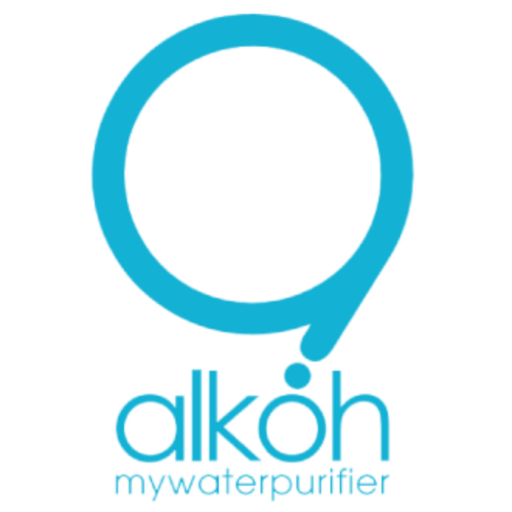In today’s competitive industrial landscape, every ringgit counts. Whether you operate a food processing plant in Johor, a semiconductor facility in Penang, or a manufacturing line in Selangor, water usage plays a major role in your operational costs. What many business owners overlook is this: an inefficient water purification system could be silently costing you tens of thousands per year in energy, maintenance, and compliance issues.
As an industrial water treatment consultant with over a decade of experience serving factories across Malaysia and Singapore, I’ve seen how switching to an efficient industrial water purifier can drastically lower overheads. In this article, I’ll explain how the right system not only improves water quality but directly contributes to bottom-line savings.
Why Water Purification Affects Your Operating Costs
Water is involved in nearly every stage of industrial operations:
- Production lines
- Cooling systems
- Steam generation
- Cleaning and sanitation
- Discharge management
Without proper purification, you’ll face:
- Frequent machine breakdowns
- Non-compliance penalties from DOE
- Excessive chemical use
- High water and electricity bills
How an Efficient Industrial Water Purifier Reduces Costs
Let’s break down the key ways an efficient system brings long-term savings:
1. Protects Equipment and Minimises Downtime
Waterborne contaminants like calcium, magnesium, iron, and particulates can cause:
- Scaling in boilers and chillers
- Clogging in pipelines and spray nozzles
- Corrosion in expensive components
ROI Insight: A factory in Klang reduced boiler tube failures by 80% after installing an RO-based pre-treatment system, saving over RM 100,000 annually in maintenance and replacements.
2. Reduces Chemical Consumption
Hard or contaminated water requires more chemical dosing in:
- Cooling towers
- Sterilisation processes
- Effluent neutralisation
By starting with cleaner water, you use fewer chemicals downstream — less dosing, less sludge, and lower chemical purchasing costs.
3. Lowers Energy Usage
Scale buildup on heat exchange surfaces leads to:
- Lower thermal efficiency
- Higher energy consumption
- Longer heating or cooling cycles
Efficient filtration and softening systems keep heat transfer equipment clean, improving performance and reducing utility bills.
Example: A Penang electronics factory cut chiller energy costs by 15% after installing a high-efficiency softener + carbon filtration unit.
4. Improves Water Recovery and Reduces Waste
Advanced systems like RO with concentrate recovery or Zero Liquid Discharge (ZLD) technology allow factories to:
- Reuse process water
- Reduce freshwater intake
- Slash wastewater disposal fees
Not only do you save on incoming water bills, but you also cut down on effluent management costs.
5. Ensures Compliance, Avoiding Fines and Shutdowns
Effluent that fails to meet Department of Environment (DOE) regulations can result in:
- Hefty fines
- Temporary shutdown orders
- License renewal complications
A properly designed purification and discharge treatment system guarantees compliance, offering regulatory peace of mind.
Key Features of a Cost-Efficient Industrial Water Purifier
When choosing a system, look for:
| Feature | Cost-Saving Benefit |
|---|---|
| Automated backwashing & flushing | Reduces manual labour and extends filter life |
| Low-energy RO membranes | Cuts energy usage per litre processed |
| Real-time monitoring | Early detection of anomalies prevents major repairs |
| Modular design | Easier to scale or replace parts without full system overhaul |
| Smart drain recovery | Recycles rejected water for cleaning or secondary processes |
Case Study: How a Johor F&B Manufacturer Saved RM 150K in 12 Months
Company: Mid-sized beverage manufacturer
Problem: High downtime and rising maintenance costs in steam boilers and bottling machines
Solution: Installed a multi-stage industrial water purifier (sand filter → carbon → RO → UV) with auto-backwash and digital flow sensors
Result:
- 50% reduction in boiler maintenance
- 20% lower water bills
- Zero DOE compliance issues
- Total yearly savings: RM 150,000
How to Choose the Right Water Purifier for Maximum ROI
- Test Your Water
Start with a full water analysis to identify specific contaminants. - Understand Your Process
Different industries need different levels of water purity. A pharmaceutical plant has different standards than a plastic injection molding facility. - Work with Certified Experts
Look for suppliers or engineers with:- DOE-compliant design experience
- Halal certification (if relevant)
- ISO and CE-certified systems
- Calculate Lifetime Cost, Not Just Upfront Price
An RM 200K system that lasts 10 years with low maintenance is cheaper than a RM 100K system that breaks down every year.
Bonus: Improve ESG and Sustainability Score
In today’s global supply chain, efficient water management helps improve:
- ISO 14001 compliance
- ESG reporting metrics
- Green partnership eligibility (especially for MNC suppliers)
An efficient industrial purifier not only saves you money — it enhances your brand image.
Final Thoughts: Invest Smart, Operate Lean
Water purification is no longer just an operational task. It’s a strategic decision that can drive cost savings, increase production uptime, and ensure compliance. As Malaysian industries evolve in 2025, factories that invest in efficient water systems will gain a strong competitive advantage — both financially and environmentally.
Author’s Note
As a water treatment advisor to more than 80 factories in Malaysia and Singapore, I’ve seen businesses transform from reactive maintenance to proactive savings — simply by upgrading their water systems. If you need a site visit or cost-benefit analysis tailored to your facility, I’m happy to help.

